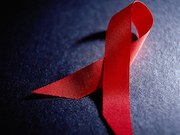High-frequency psychosocial risk trajectory has lasting effect on HIV risk behaviors in adulthood
THURSDAY, Dec. 28, 2017 (HealthDay News) — High-frequency psychosocial risk factors during adolescence have a lasting effect on the likelihood of engaging in HIV risk behaviors in adulthood, according to a study published online Dec. 12 in AIDS.
David Cordova, Ph.D., from the University of Michigan in Ann Arbor, and colleagues conducted an 18-year longitudinal study involving 850 predominantly African-American adolescents. The authors examined trajectories of adolescent psychosocial risk and the longitudinal correlation between risk trajectories during adolescence and HIV risk behaviors in adulthood.
The researchers identified two trajectories of psychosocial risk factors, which can be characterized as a syndemic index: high- and low-frequency. The likelihood of reporting HIV risk behaviors, including condomless sex at last intercourse with their primary and secondary partner, sexual intercourse with someone they just met, having at least four sexual partners, and licit and illicit drug use before sexual intercourse at a mean age of 23.1 years, was increased for the high-frequency class. Compared with the low-frequency class, the high-frequency class was more likely to report sexual intercourse with someone they just met and to have at least four sexual partners at a mean age of 32 years. There was a correlation for the high-frequency class with peer and family-level indicators of social conditions.
“A syndemic index comprised of co-occurring psychosocial risk factors in adolescence seem to have lasting effects on the vulnerability to engage in HIV risk behaviors in emerging adulthood, some of which extend into middle adulthood,” the authors write.
Copyright © 2017 HealthDay. All rights reserved.








